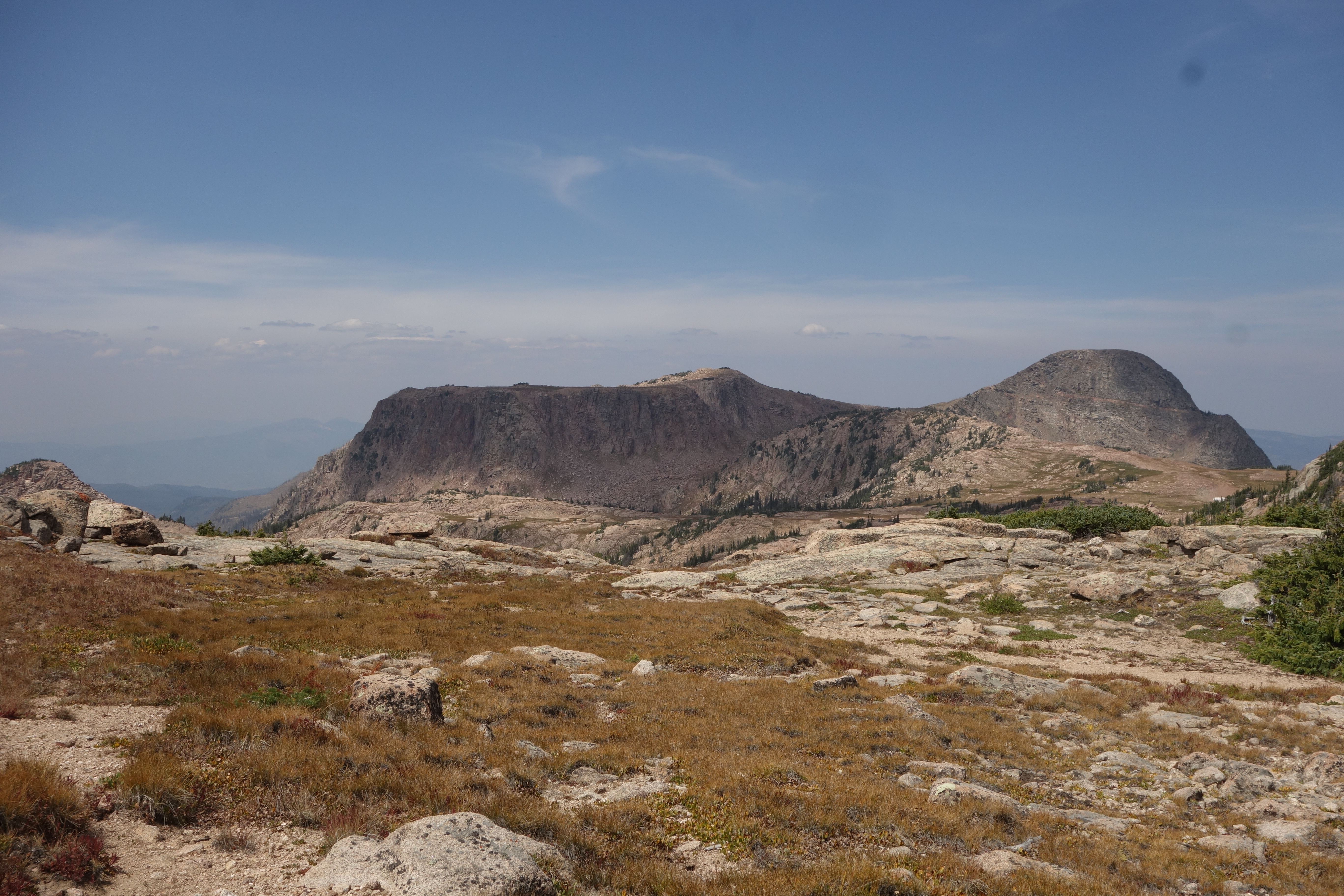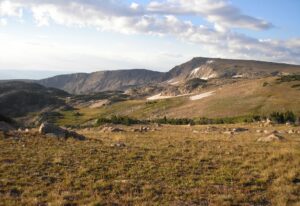by Luke Fisher, Trail Policy Program Manager, Continental Divide Trail Coalition
Standing at the top of Muddy Pass in autumn, the sweeping views of golden grasses, green pine, and yellow aspens delight with all the beauty of Colorado in the fall. Given the idyllic ridgeline views and the stones-throw distance to outdoor destinations like the Medicine-Bow Routt Forest and Rabbit Ears Peak, it’s easy to understand why it’s the ideal experience for travelers on the Continental Divide National Scenic Trail (CDT). However, currently, CDT hikers, equestrians, and others are not able to fully immerse themselves in the beauty of the environment due to a reroute of the CDT that takes trail users onto the highway for 15 miles. Fortunately, this all may change thanks to new legislation recently introduced to Congress.
For the first time in nearly 50 years, managers of a Congressionally designated, long-distance trail are poised to be empowered with new acquisition direction and greater coordination between agencies through new legislation introduced to Congress late this summer. The new legislation has brought new energy to efforts already happening on the ground to complete the CDT, making good on the commitment made by Congress in 1978 to provide a high-quality, scenic, primitive, continuous footpath along the Divide from New Mexico to Montana.
The CDT Completion Act, H.R. 5118, introduced by Congressman Joe Neguse (CO-2) and co-sponsored by Congresswoman Teresa Fernandez (NM-03), will deliver on the promise made by Congress to provide a trail that is accessible, enjoyable, and that preserves the integrity of the scenic, cultural, and historic resources that exist all along the Continental Divide. Under this legislation, the U.S Forest Service and Bureau of Land Management are directed to create an acquisition team to increase coordination between Federal agencies managing the trail.
The bill also recognizes the tireless work of Gateway Communities, local organizations, partners, and volunteers who have strived for decades to make a completed CDT a reality, while also directing the Continental Divide Trail Coalition (CDTC) to report annually to Congress on the status of the trail’s completion, thus demonstrating the trust and strength that exists in the private-public partnerships that make the dream of the National Trails System possible. Combined with the passage of the Great American Outdoors Act, which guaranteed full funding for the Land and Water Conservation Fund, the bill would provide a strategic next step to demonstrating that an investment in our public lands is also an investment in communities.
Since the CDT’s establishment in 1978, the trail has grown from 64% complete in 2009 to 96% complete in 2021 and now has the opportunity to prioritize sections for completion by 2028 to reach the goal of 100% completion in time for the Trail’s 50th anniverary. Just this year alone, work is being done to fill in minor gaps across the trail in the Gila National Forest and the Big Burro Mountains in New Mexico, and a reroute completed outside of Pinedale, Wyoming transitioned an 8-mile roadwalk to meandering singletrack with iconic alpine views. With the introduction of the CDT Completion Act, many CDTC Gateway Communities, like Steamboat Springs near Muddy Pass, are hopeful that they will see the gap sections near their towns completed, as well.
A completed trail benefits Gateway Communities and recreationists alike. For towns like Steamboat Springs, moving the trail off of a roadwalk creates greater opportunities for locals and visitors to the area. Pinedale has already seen out-of-towners, dayhikers, and other recreationists looking to explore the cliffs, wildflowers, and wildlife the newly completed section of trail has to offer, none of which were able to be seen on the roadwalk into town that previously existed. Filling in the trail gaps creates incentives for new visitors to boost the towns’ outdoor recreation industries, which are often the powerhouses of the local economy for many of the rural communities the CDT connects. It also creates greater opportunities for locals to connect with one another in open greenspaces, provides chances for educational experiences for youth and adults alike, and creates a more accessible trail, benefiting the overall public health of the community.
The CDT Completion Act presents a historic opportunity, not only for the outdoor enthusiasts and Gateway Communities that will benefit from a continuous footpath that is safer, more accessible, and more in-line with the nature and purpose of the trail, but for the entire National Trails System, which benefits when the public-private partnership is strengthened through increased opportunities for collaboration and innovation within the shared-stewardship model. As a connector of communities, cultures, and landscapes since 1978, the CDT has transformed the experience of those living and traveling on the Divide. With this bill, there is now the opportunity to chart the trail’s path into the future and ensure this world-renowned resource continues to be a place for all people to learn, explore, and heal in the outdoors.
For more information on the CDT Completion Act, visit: www.congress.gov/bill/117th-congress/house-bill/5118


